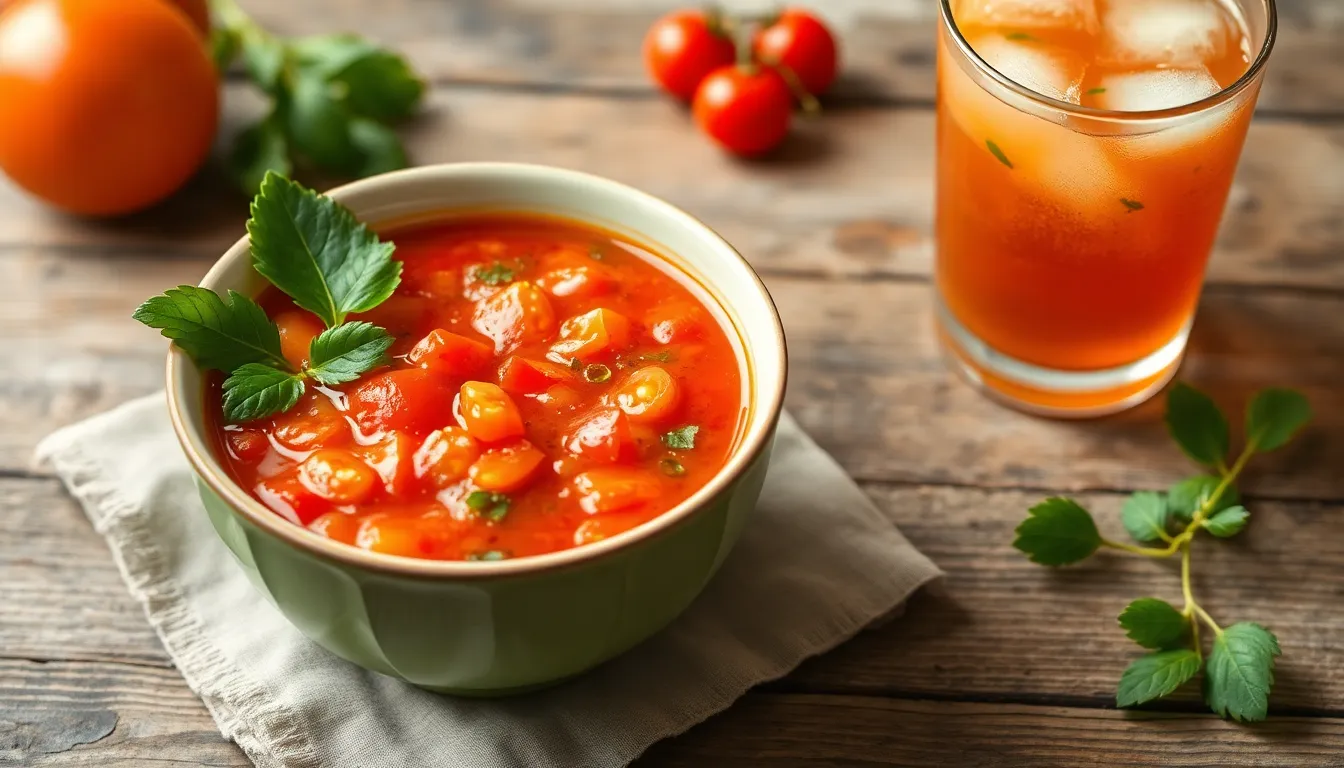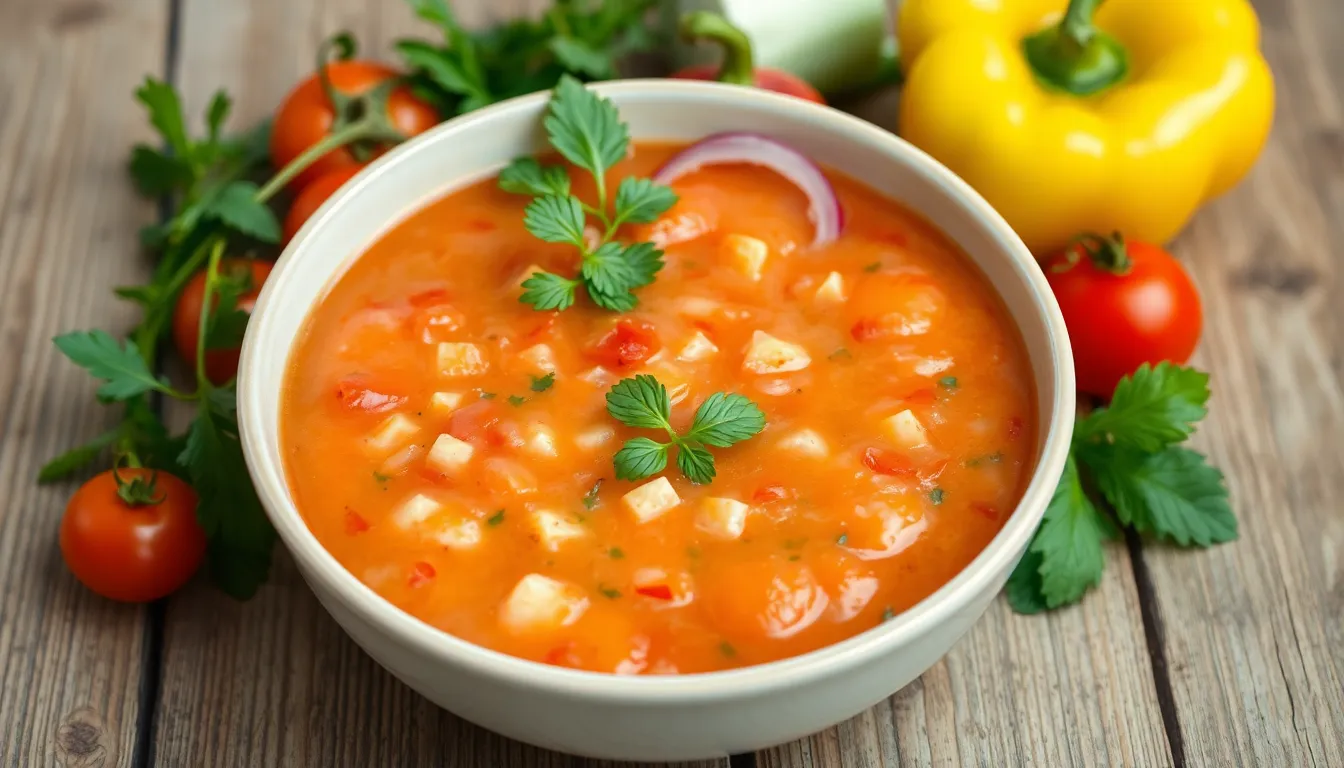Table of Contents
ToggleRizopacho, a delightful dish that’s a feast for the senses, often leaves food lovers wondering about its nutritional perks. But wait—does it pack a punch when it comes to iron? If you’ve ever gazed longingly at a bowl of this creamy goodness while dreaming of stronger muscles and healthier blood, you’re not alone.
Understanding Rizopacho
Rizopacho is a creamy dish that originates from traditional culinary practices. This favorite dish often captivates those seeking both comfort and nutrition.
What Is Rizopacho?
Rizopacho consists mainly of rice and various ingredients blended together to create a smooth texture. This dish frequently contains vegetables and spices, enhancing its flavor profile. Regions may influence its preparation, resulting in various local interpretations. Some versions offer customizable ingredients, catering to personal tastes and dietary preferences.
Key Ingredients
Key ingredients in rizopacho include rice, which serves as the primary base. Vegetables such as tomatoes, peppers, and onions add essential nutrients and vibrant colors. Dairy products like cream or cheese contribute to the dish’s rich texture and flavor. Seasonings and spices typically enhance overall taste, making each bowl unique. Fresh herbs may provide additional layers of flavor, intensifying the overall experience.
Nutritional Profile of Rizopacho

Rizopacho offers a balanced mix of important nutrients. Its main ingredients contribute significantly to overall health.
Macronutrients
Rizopacho is primarily composed of carbohydrates, mainly from rice. This base provides essential energy for daily activities. Proteins appear in moderate amounts, particularly from dairy sources like cheese or cream in the dish. Fats come from these dairy ingredients as well, adding to the dish’s creamy texture. The proportion of macronutrients can vary depending on individual recipes, influencing the overall nutritional balance.
Micronutrients
Iron plays a key role in Rizopacho’s nutritional content. Fresh vegetables, especially peppers and tomatoes, introduce vitamins like A and C. B vitamins also feature prominently, supporting metabolism and overall health. Calcium and magnesium present through dairy ingredients contribute to bone health. Variations in ingredients may enhance these micronutrient profiles, catering to specific dietary needs and preferences.
Iron Content in Rizopacho
Rizopacho contains notable iron content that benefits those seeking dietary sources of this essential mineral. Iron primarily comes from the dish’s ingredients, which include rice and vegetables like spinach and beans, depending on the variations used.
Sources of Iron
Rizopacho may contain iron from various sources. Rice contributes a small amount, while legumes and dark leafy greens boost the iron level significantly. Dairy elements like cheese and cream often included in Rizopacho provide additional nutrients, enhancing the overall iron profile. Fresh herbs and spices can also provide trace amounts of iron, contributing to its nutritional diversity.
Comparison with Other Foods
When comparing Rizopacho to other foods, its iron content ranks moderately. For instance, lentils and spinach offer higher iron concentrations, with lentils providing approximately 3.3 mg of iron per cooked cup. In contrast, a serving of Rizopacho may yield about 1 mg of iron. While Rizopacho might not excel in iron levels like red meat or fortified cereals, it maintains a balanced nutrient profile that can complement a diet rich in iron.
Health Benefits of Iron
Iron plays a vital role in overall health, significantly contributing to energy levels and immune function. It’s essential for red blood cell production, which transports oxygen throughout the body. Iron supports metabolic processes and enhances mood and cognitive function.
Importance of Iron in the Diet
Iron fulfills crucial functions in the body. It aids in hemoglobin formation, allowing red blood cells to carry oxygen efficiently. Various food sources provide iron, including legumes, dark leafy greens, meat, and fortified cereals. Adults, especially women of childbearing age, require approximately 18 mg of iron daily, while men need about 8 mg. A balanced intake helps prevent fatigue and boosts exercise performance. Consuming vitamin C alongside iron-rich foods enhances absorption.
Potential Deficiencies
Iron deficiency can lead to anemia, characterized by fatigue, weakness, and decreased immunity. Symptoms may manifest in cognitive impairment and poor concentration. Deficiency among women and young children often reflects inadequate dietary intake or increased needs. Individuals following a vegetarian or vegan diet may face a higher risk. Regular screenings and blood tests can identify deficiencies early. Addressing inadequate iron levels through diet or supplementation is critical for maintaining optimal health.
Rizopacho stands out as a flavorful dish that not only satisfies the palate but also offers a moderate amount of iron. While it may not compete with iron-rich foods like lentils or red meat, its combination of rice and vegetables can still contribute to daily iron intake. By incorporating ingredients like spinach or beans, one can enhance the dish’s nutritional profile further.
For those seeking to boost their iron levels, Rizopacho can be a delightful addition to a balanced diet. Its versatility allows for customization, making it an appealing choice for various dietary needs. Enjoying this creamy dish can be both a comforting experience and a step toward better health.





